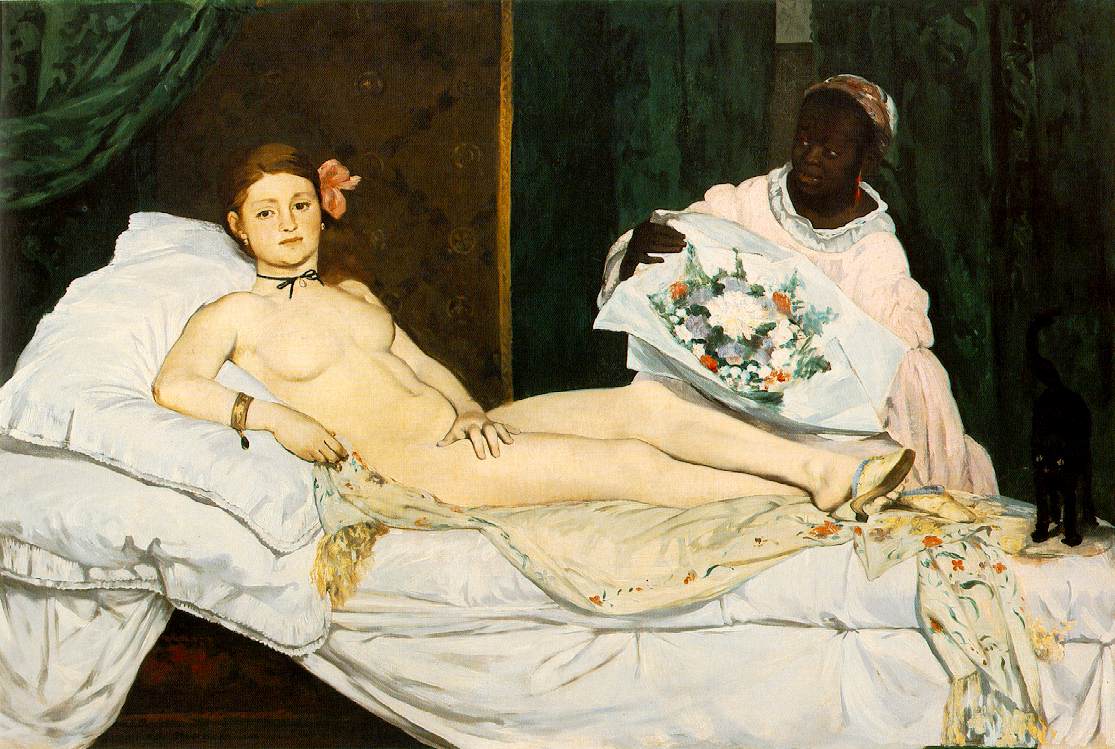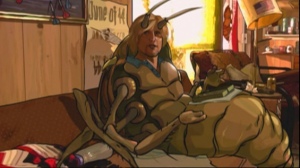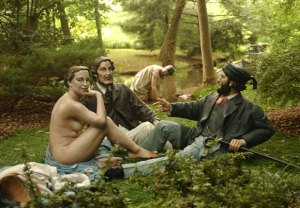 TECHNOLOGY
TECHNOLOGY In Which I Want Your Skulls, I Need Your Skulls
 Thursday, October 29, 2009 at 3:14PM
Thursday, October 29, 2009 at 3:14PM 
Seismograph, Phonautograph, Skull: On Useless Recordings
by COLIN DICKEY
The first known seismograph was invented in China by Zhang Heng in 132 CE, during the Han Dynasty. It consisted of a bronze urn about 3 feet in diameter, adorned with eight dragons around it.

Each dragon’s mouth held a ball, and when an earthquake hit, the closest dragon’s mouth would open, dropping the ball into the urn and indicating the direction of origin of the earthquake.

The modern seismograph came into development in the late 1880s. The basic principle has remained unchanged since then —a free-floating weighted pendulum sits above a recording drum which moves during the earthquake, while the pendulum stays still, recording relative motion.

The seismograph doesn’t record an earthquake in the way a video camera records an event. One does not record an earthquake to play it back later. The seismograph works by translating the earthquake into data, into something that can be read, analyzed, cataloged. Likewise with the phonautograph, the first known sound recording.

The first phonautographs were made in 1857 by Édouard-Léon Scott de Martinville, who attached a hog’s bristle to a membrane and focused a horn on it, so that sound waves would vibrate the hog bristle, which in turn scratched its movement on a lamp-blackened glass plate.

The phonautograph had no playback mechanism—it wasn’t until 2008 that they were made audible through digital analysis—but it could translate sound into a graphic form, allowing de Martinville to determine the frequencies of various musical pitches.

But while not as practical as an mp3, the phonautograph makes for a beautiful image—an eerie translation of sound into image, into a thing that can be analyzed.

I’ve been thinking about skulls, about phrenology. There’s something I find so captivating about Franz Joseph Gall, the inventor of phrenology, about the way his mind worked, about how one comes to see the human body in new ways. Gall was a young medical student, struggling in school, and jealous of his peers who could memorize facts so much easier than he could.

He wanted to know why they were so much better at memorization, and so rather than studying harder in school he started staring at them in envy, trying to figure it out. Finally he came upon the notion that their eyes were bigger, and deduced, in his inimitable way, that big eyes somehow correlated with increased memory.

That’s the basis of phrenology (what Gall originally called “cranioscopy”): different parts of the brain do different things, and that brain size indicates capacity. Gall went on to theorize that these different parts of the brain would press on the skull and make an indentation, so that one could map these corresponding parts of the brain, and their relative strengths and weaknesses, on the skull itself. Thus, “bump reading”: feeling the scalp or a skull to learn about the person’s brain and personality.

Yes, all of this is ludicrous. Yes, at times it got downright offensive: the world-famous criminologist Cesare Lombroso, for example, argued that women’s natural inclination was to marry and have children, and if this didn’t happen they turned out bad (the virgin-assassin Charlotte Corday, and the bumps on her skull, was a prime case for him). No, I don’t believe in any of it. But what I find so elegant about Gall’s theory is the way he made the skull into a recording device.

The brain's workings are invisible and silent: it doesn't work like other organs. Take the heart: Cut open a body and there it sits, at the center of the human world. You can trace its veins and arteries threading out in every direction, in order to understand its networks. If you cut open a still living body, you can see it going about its bloody work.

The brain is a different matter. It sits removed; it keeps its secrets to itself. When the Egyptians embalmed a body, they placed each organ in a separate urn; each was sacred, each was worthy of reverence—except the brain. It works not with blood or food but with its own electricity, and it keeps its own counsel. The Egyptians didn’t know what it was for, so they threw it away. By the eighteenth century, anatomists knew more about the brain and its networks, but it still remained remarkably aloof.

The motivation that drives phrenology, at its heart, is a quest for the visible. The Enlightenment was a time when people were obsessed with sight and metaphors of vision—you can see the obsession in the name itself, an age of illumination. To see a thing was to know it.

The metaphoric connection between sight and knowledge drove much of Enlightenment thought, from Jean-Jacques Rousseau’s desire in 1761 to become “a living eye” to Ralph Waldo Emerson, ninety years later, becoming a “transparent eyeball” in moments of transcendence.

As one modern commentator points out, the Enlightenment conceptualized a reasoning mind whose “processes appear to have been closely akin to those of the seeing eye.”

Gall was ultimately a man of his age, who sought knowledge in sight and did his best to bring the study of the brain into an era in which only sight mattered. Maybe he can be forgiven if in trying just a little too hard to solve this problem he created one of the most egregious pseudosciences of the nineteenth century.

Two hundred years earlier, Rene Descartes had written, “All the management of our lives depends on the senses, and since that of sight is the most comprehensive and the noblest of these, there is no doubt that the inventions which serve to augment its power are among the most useful that there can be.”
 He was speaking of telescopes and microscopes, but cranioscopy would soon find its place as just one more such lens, opening up what was hitherto invisible to the eye.
He was speaking of telescopes and microscopes, but cranioscopy would soon find its place as just one more such lens, opening up what was hitherto invisible to the eye.

What Gall did to the skull was to re-envision it as a recording device, something like a seismograph, or a phonautograph. The skull took the ineffable, incomprehensible workings of the brain, and not only recorded them, but translated them into something that could be mapped, decoded, read.

As if a weirdly organic precursor to the phonograph, the skull appeared to phrenologists as something like a recording device, a malleable surface onto which a record of the ineffable could be printed. The etymology of the terms is telling: whereas “phrenology” means “mind-knowing,” Gall’s own term, “cranioscopy,” means “skull-seeing.”
Electroencephalography, or EEG, came into its own in 1920, and at that point we finally had a reliable method for recording the electrical signals emitted from the brain. Phrenology had already been debunked by then, and the last century has done much to blot its most obscene prejudices and claims from popular imagination.

But the effects that remain—the ceramic busts, the charts, and, most of all, the odd beauty of Gall’s thought process—continue to permeate the world around us. As the phonautograph and Zhang Heng’s urn show, it’s when a science ceases to be useful that it becomes beautiful.

Colin Dickey is a writer living in Los Angeles and the author of the recently published book Cranioklepty: Graverobbing and the Search for Genius.
buy "Cranioklepty" at Amazon or Unbridled Books
THIS RECORDING IS AN INTERNET RECORDING DEVICE

 colin dickey,
colin dickey,  han dynasty,
han dynasty,  seismograph
seismograph 










































